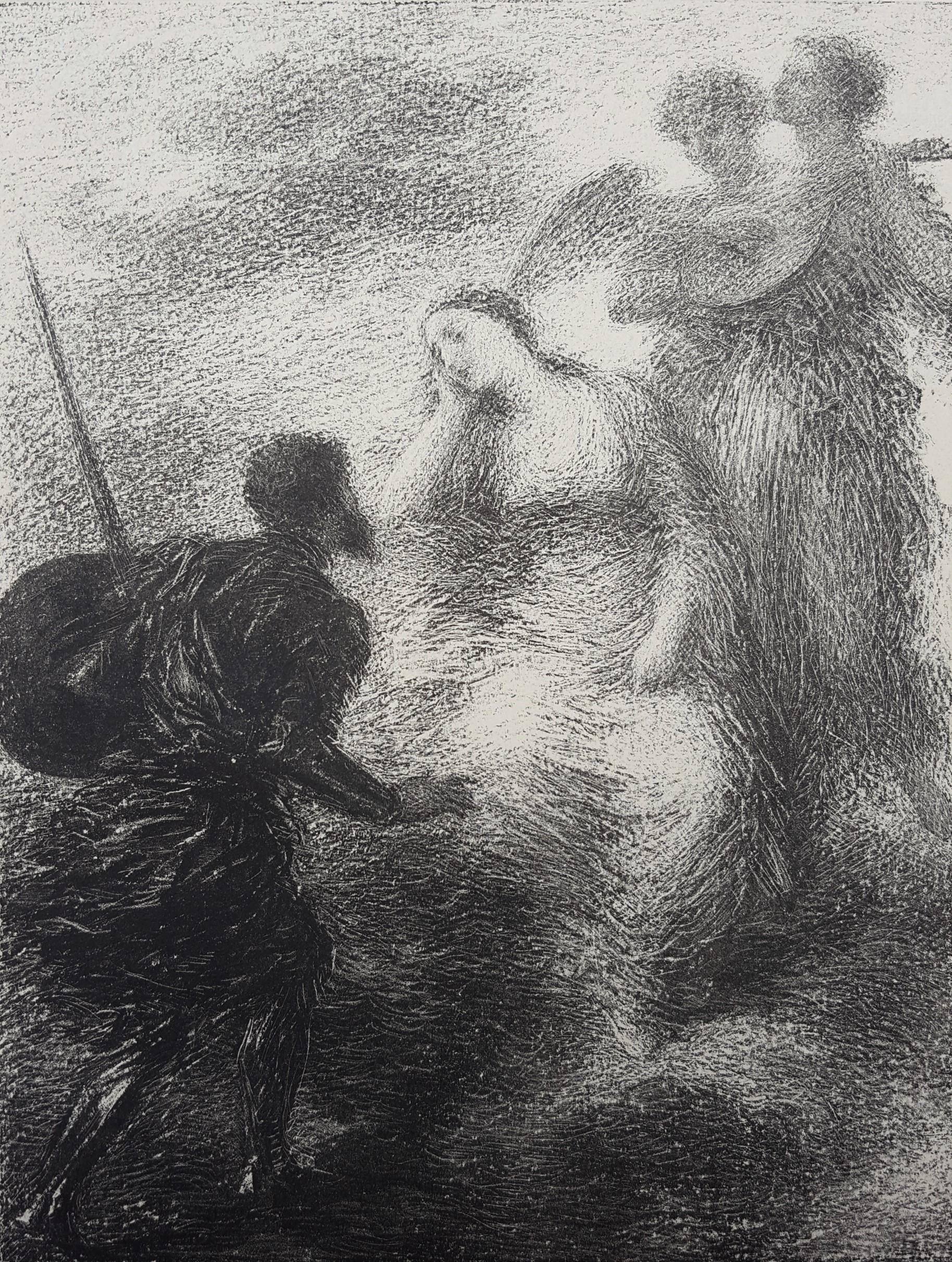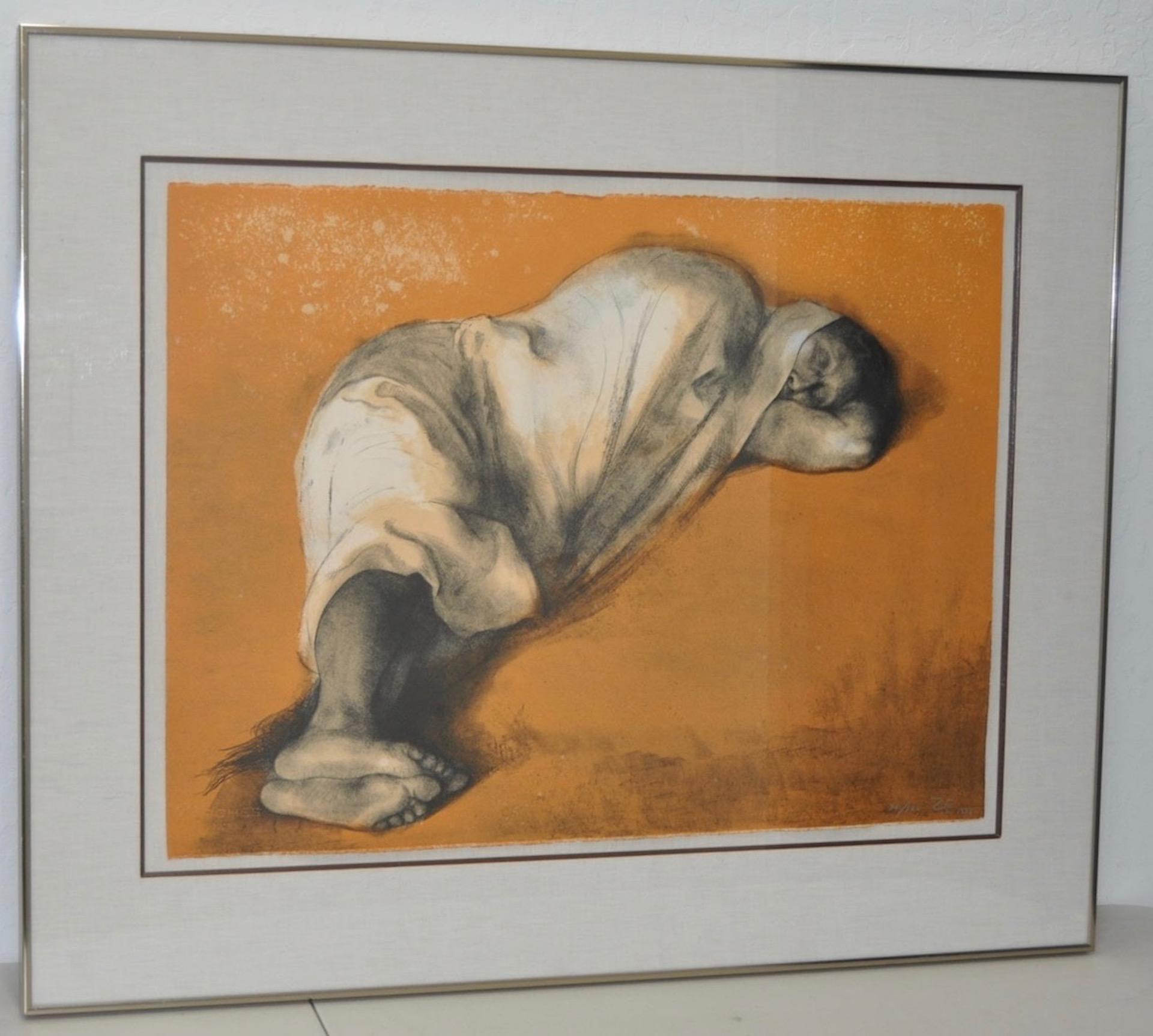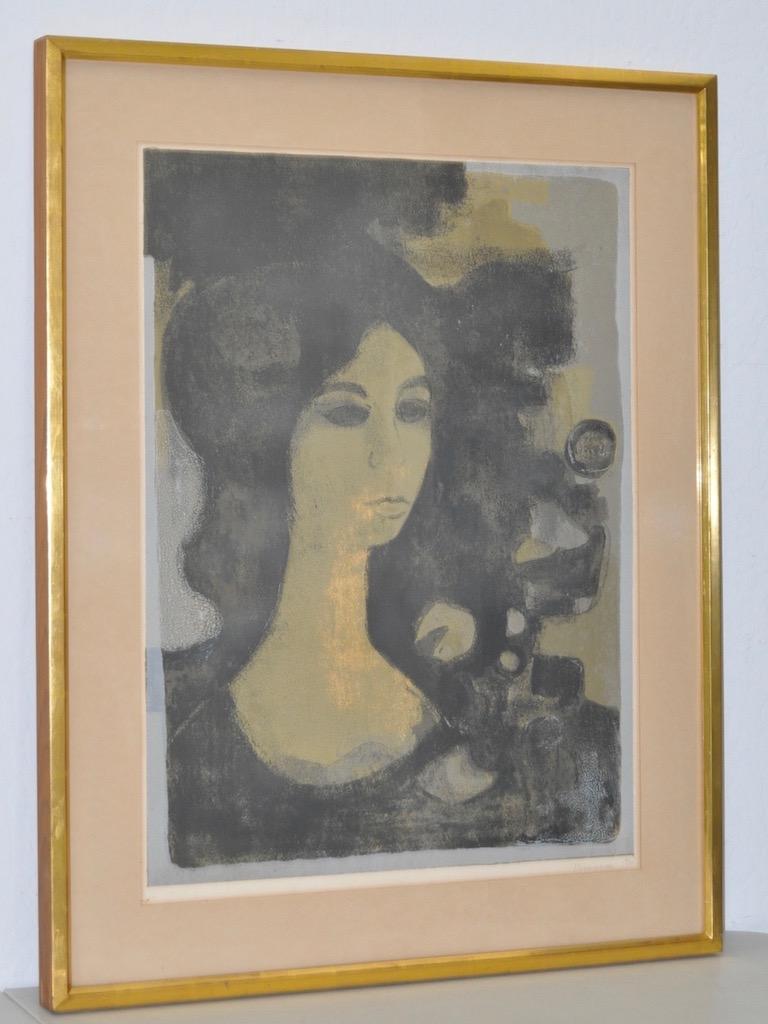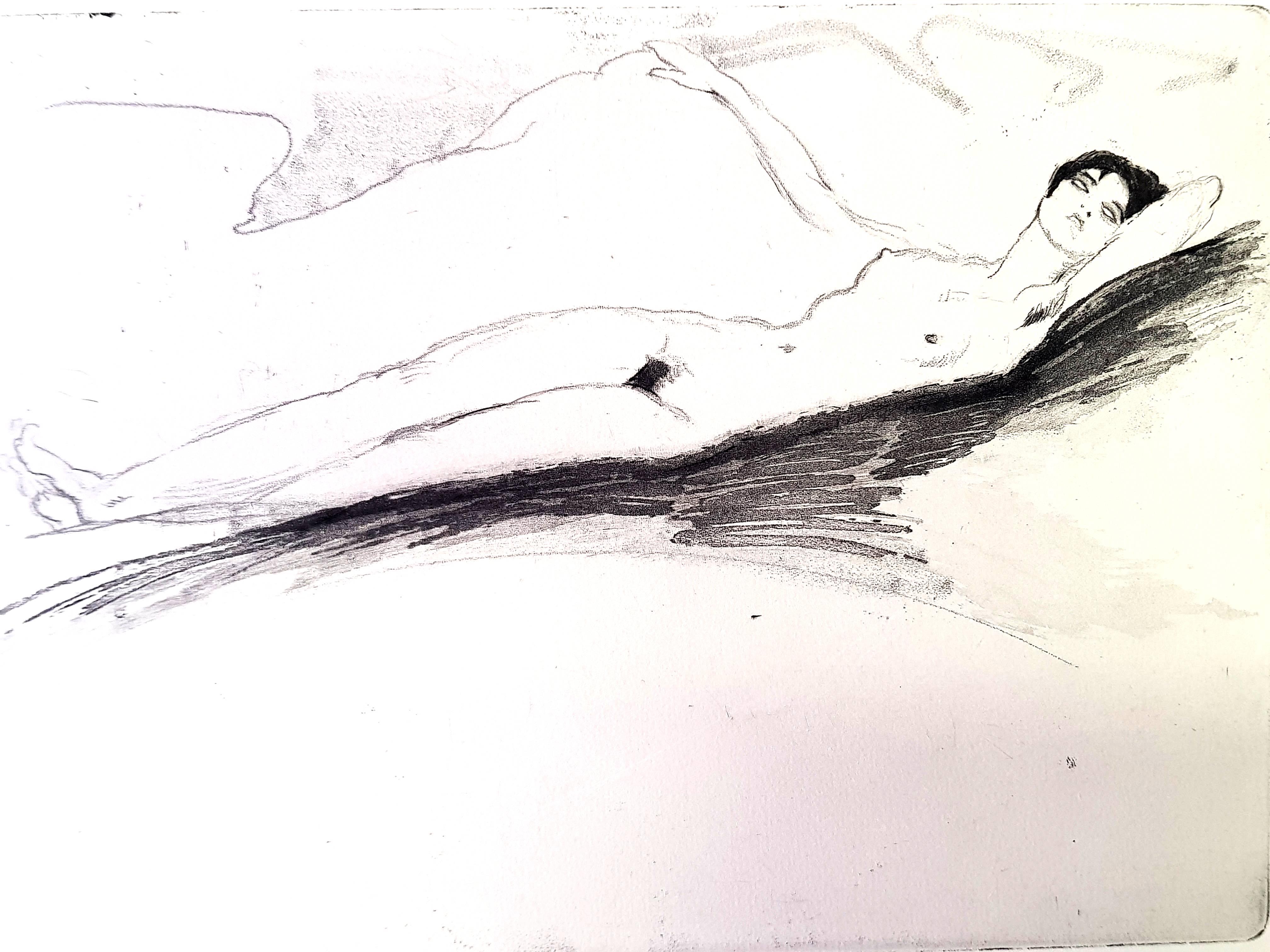Camille PissarroBûcheronnes - Groupe de paysannes by Camille Pissarro - Lithograph
About the Item
- Creator:Camille Pissarro (1831-1903, French)
- Dimensions:Height: 5.32 in (13.5 cm)Width: 9.53 in (24.2 cm)
- Medium:
- Movement & Style:
- Period:
- Condition:
- Gallery Location:London, GB
- Reference Number:1stDibs: LU261214155072
Camille Pissarro
Camille Pissarro was one of the most influential members of the French Impressionist movement and the only artist to participate in all eight Impressionist exhibitions.
Born in July of 1830 on the island of Saint Thomas in the Danish West Indies, Camille was the son of Frédéric and Rachel Pissarro. At the age of 12, he went to school in Paris, where he displayed a penchant for drawing. He returned again to Paris in 1855, having convinced his parents to allow him to pursue a career as an artist rather than work in the family import/export business. Camille studied at the Académie Suisse alongside Claude Monet, and, during this time, he met Paul Cézanne, Édouard Manet and Pierre-Auguste Renoir.
In 1869, Camille settled in Louveciennes. The outbreak of the Franco-Prussian War in 1870 prompted him to move to England, and, with Monet, Camille painted a series of landscapes around Norwood and Crystal Palace, while studying English landscape painting in the museums. Upon returning a year later at the end of the War to Louveciennes, Camille discovered that only 40 of his 1,500 paintings — almost 20 years’ work — remained undamaged.
Camille settled in Pontoise in the summer of 1871, remaining there and gathering a close circle of friends around him for the next 10 years. He reestablished relationships with Cézanne, Manet, Monet, Renoir and Edgar Degas, expressing his desire to create an alternative to the Salon, so that their group could display their own unique styles. Camille married Julie Vellay, with whom he would have seven children. Cézanne repeatedly came to stay with them, and, under Camille’s influence, he learned to study nature more patiently, even copying one of Camille’s landscapes in order to learn his teacher’s technique.
The first Impressionist group exhibition, initiated by Monet in 1874, earned the Impressionists much criticism for their art. While mainly interested in landscape, Camille introduced people — generally, peasants going about their rural occupations — and animals into his works, and they often became the focal point of the composition. It was this unsentimental and realistic approach, with the complete absence of any pretense, which seemed to stop his work from finding appreciation in the general public.
One of the few collectors who did show interest in Camille’s work was a bank employee named Paul Gauguin, who, after acquiring a small collection of Impressionist works, turned to Camille for advice on becoming a painter himself. For several years, Gauguin closely followed his mentor, and, although their friendship was fraught with disagreement and misunderstandings, Gauguin still wrote shortly before Camille’s death in 1906: “He was one of my masters, and I do not deny him.”
In the 1880s, Camille moved from Pontoise to nearby Osny, before Eragny, a small village much further from Paris. At a time when he was dissatisfied with his work, in 1885, Camille met both Paul Signac and Georges Seurat. He was fascinated by their efforts to replace the intuitive perceptive approach of the Impressionists with a “Divisionist” method, or scientific study of nature’s phenomena based on optical laws. Despite having reached his mid-50s, Camille did not hesitate to follow the two young innovators. The following year, he passed on this new concept to Vincent Van Gogh, who had just arrived in Paris and was keen to learn of the most recent developments in art. However, after a few years, Camille felt restricted by Seurat’s theories and returned to his more spontaneous technique while retaining the lightness and purity of color acquired during his Divisionist phase.
In the last years of his life, Camille divided his time between Paris, Rouen, Le Havre and Eragny, painting several series of different aspects of these cities, with varying light and weather effects. Many of these paintings are considered among his best and make for an apt finale to his long and prodigious career.
When Camille Pissarro died in the autumn of 1903, he had finally started to gain public recognition. Today his work can be found in many of the most important museums and collections throughout the world.
Find original Camille Pissarro art on 1stDibs.
(Biography provided by Stern Pissarro Gallery)
- ShippingRetrieving quote...Ships From: London, United Kingdom
- Return PolicyA return for this item may be initiated within 7 days of delivery.
- The Four Seasons - Autumn by Lélia Pissarro, SerigraphBy Lelia PissarroLocated in London, GBThe Four Seasons - Autumn by Lélia Pissarro (B. 1963) Serigraph 51 x 69 cm (19 ⅞ x 27 ⅛ inches) 61.5 x 79 cm (24 ¼ x 31⅛ inches) Signed and numbered Printed in an edition of 300 Art...Category
21st Century and Contemporary Impressionist More Prints
MaterialsSilk, Lithograph
- The Four Seasons - Spring by Lélia Pissarro, SerigraphBy Lelia PissarroLocated in London, GBThe Four Seasons - Spring by Lélia Pissarro (B. 1963) Serigraph 50.5 x 69 cm (19 ⅞ x 27 ⅛ inches) 61.5 x 79 cm (24 ½ x 31 ⅛ inches) Signed and numbered Printed in an edition of 300 ...Category
1990s Impressionist More Prints
MaterialsSilk, Lithograph
- Paysanne au puits by Camille Pissarro - EtchingBy Camille PissarroLocated in London, GBPaysanne au puits by Camille Pissarro (1830-1903) Etching 23 x 19.3 cm (9 x 7 ⁵/₈ inches) Stamped lower left, C.P. and numbered 8/50 Created in 1891 and printed at a later date as a...Category
1890s Impressionist Figurative Prints
MaterialsEtching
- Une Femme Assise by Lucien Pissarro - EtchingBy Lucien PissarroLocated in London, GBUne Femme Assise by Lucien Pissarro (1863-1944) Etching 23 x 13 cm (9 x 5 ¹/₈ inches) Stamped lower right, L.P. and numbered lower left, 10/20 Provenance: John Bensusan Butt Private...Category
1890s Impressionist Figurative Prints
MaterialsEtching
- Mère et enfant by Lélia Pissarro - EtchingBy Lelia PissarroLocated in London, GBMère et enfant by Lélia Pissarro (b. 1963) Etching 3 x 3 cm (1 ¹/₈ x 1 ¹/₈ inches) Signed lower left, Lélia Pissarro Inscribed lower right: E.A (artist proof in French) Artist biog...Category
21st Century and Contemporary Impressionist Figurative Prints
MaterialsEtching
- Grand’mère (effet de lumière) (La Mère de l’artiste) by Camille PissarroBy Camille PissarroLocated in London, GBGrand’mère (effet de lumière) (La Mère de l’artiste) by Camille Pissarro (1830-1903) Etching 17.1 x 25.3 cm (6 ³/₄ x 10 inches) Stamped lower right, C.P. and numbered 8/18 Executed i...Category
1890s Impressionist Figurative Prints
MaterialsEtching
- "Femme au cep de vigne, 4th var." (Woman by the Grape Vine, 4th variant)By Pierre-Auguste RenoirLocated in Hinsdale, ILRENOIR, PIERRE AUGUSTE (1841 -1919) "Femme au cep de vigne, 4th variante" Woman by the Grape Vine, 4th variant Delteil 48, Stella 48 Original lithograph in black ink, 1904 -1905 On...Category
Early 20th Century Impressionist Figurative Prints
MaterialsLithograph
- Vision /// French Romantic Classical Figurative Lady Woman Soldier Angel LithoBy Henri Fantin-LatourLocated in Saint Augustine, FLArtist: Henri Fantin-Latour (French, 1836-1904) Title: "Vison" Portfolio: Gazette des Beaux-Arts *Issued unsigned Year: 1895 Medium: Original Lithograph on chine appliqué on wove paper Limited edition: approx. 1,500 Printer: Imprimeries Lemercier, Paris, France Publisher: Gazette des Beaux-Arts, Paris, France Reference: Hediard No. 122 (IV/IV); Sanchez & Seydoux 1895-6, page 126 Sheet size: 11" x 7.38" Image size: 7.5" x 5.75" Condition: Some minor discoloration in margins. In excellent condition Notes: Original cover tissue sleeve mounted at left margin as issued. This lithograph was published by Gazette des Beaux-Arts. The Gazette des Beaux-Arts was a French art review, found in 1859 by Édouard Houssaye, with Charles Blanc as its first chief editor. Assia Visson Rubinstein was chief editor under the direction of George Wildenstein from 1928 until 1960. Her papers, which include all editions of the Gazette from this period, are intact at the Cantonal and University Library of Lausanne in Dorigny. The Gazette was a world reference work on art history for nearly 100 years - one other editor in chief, from 1955 to 1987, was Jean Adhémar. It was bought in 1928 by the Wildenstein family, whose last representative was Daniel Wildenstein, its director from 1963 until his death in 2001. The review closed in 2002. Biography: Henri Fantin-Latour, in full Ignace-Henri-Jean-Théodore Fantin-Latour (born Jan. 14, 1836, Grenoble, France—died Aug. 25, 1904, Buré), French painter, printmaker, and illustrator noted for his still lifes with flowers and his portraits, especially group compositions, of contemporary French celebrities in the arts. Fantin-Latour’s first teacher was his father, a well-known portrait painter. Later, he studied at the school of Lecoq de Boisbaudran and attended the École des Beaux-Arts. He exhibited at the official French Salons, but in 1863 he also showed his work in the rebel Salon des Refusés. Although academic in manner, Fantin-Latour was independent in style. He had numerous friends among the leading French painters of his day, including J.-A.-D. Ingres, Eugène Delacroix, Camille Corot, Édouard Manet, and Gustave Courbet. His portrait groups, often arranged in rows of heads and figures like 17th-century Dutch guild portraits...Category
1890s Impressionist Figurative Prints
MaterialsLithograph
- Howard Willard "The Accordionist" Original Lithograph c.1931Located in San Francisco, CAHoward Willard "The Accordionist" Original Lithograph c.1931 Dimensions 9.25" wide x 13.5" high The frame measures 14.25" wide x 18.25" high Good condition Howard W. Willard wa...Category
Early 20th Century Impressionist Figurative Prints
MaterialsLithograph
- Soledad AcostadaBy Francisco ZúñigaLocated in San Francisco, CAPencil signed lithograph by Costa Rican Master Francisco Zuniga (1921-1998) Works by Zuniga are instantly recognizable. He is mostly known for his paintings of rural indigenous wome...Category
Mid-20th Century Impressionist Figurative Prints
MaterialsLithograph
- Andre Minaux "Tete de Femme" Original Lithograph c.1960sBy Andre MinauxLocated in San Francisco, CAAndre Minaux "Tete de Femme" Original Lithograph c.1960s From a limited edition of only 90. This lithograph is pencil signed and numbered by the artist. Dimensions 22" x 29 1/2". T...Category
Mid-20th Century Impressionist Figurative Prints
MaterialsLithograph
- Jean Gabriel Domergue - Lying Naked - Original EtchingBy Jean-Gabriel DomergueLocated in Collonge Bellerive, Geneve, CHOriginal Etching by Jean-Gabriel Domergue Dimensions: 33 x 25 cm 1924 Edition of 100 This artwork is part of the famous portfolio The Afternoon of a Faun. Jean-Gabriel Domergue Jea...Category
1920s Impressionist Nude Prints
MaterialsLithograph





